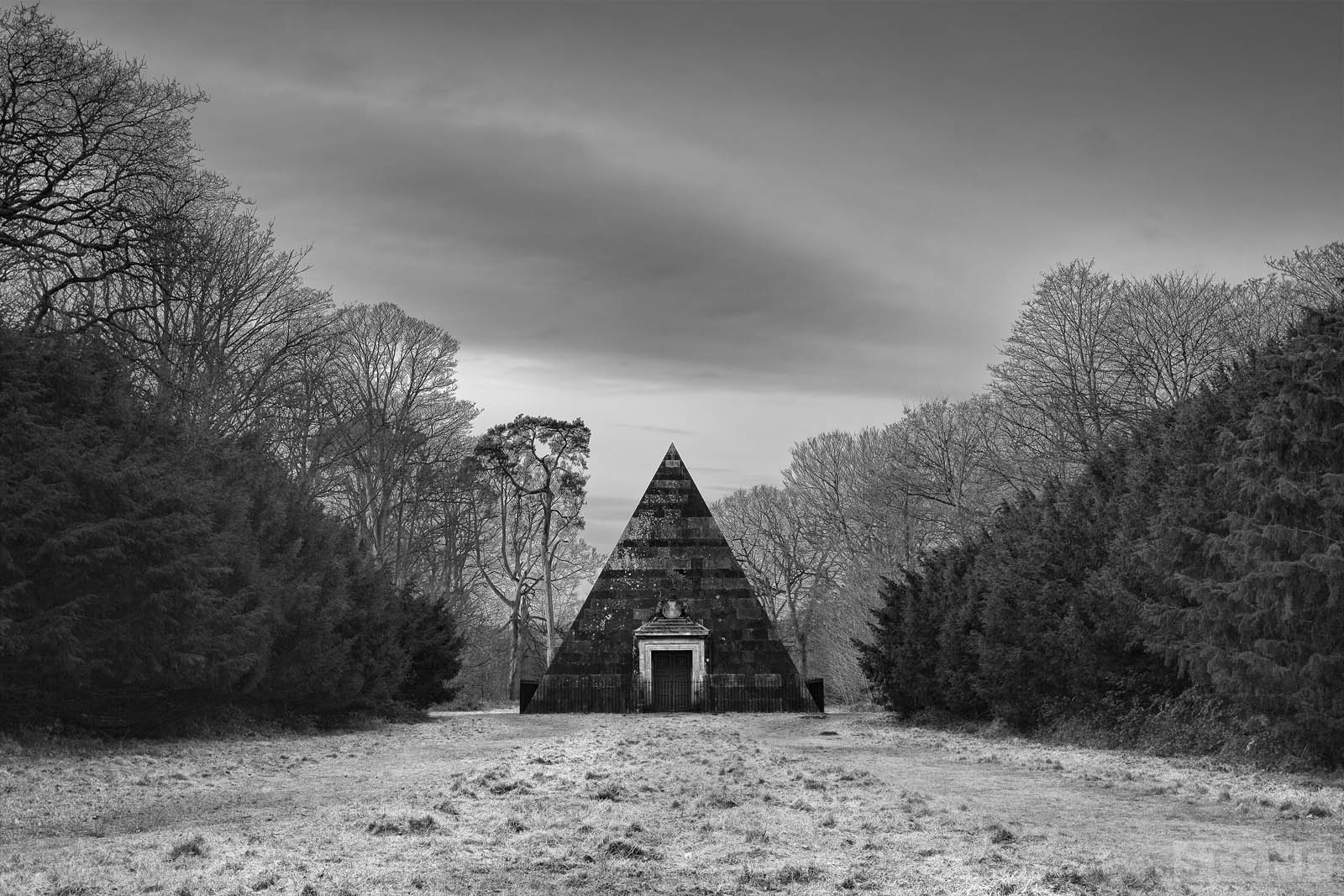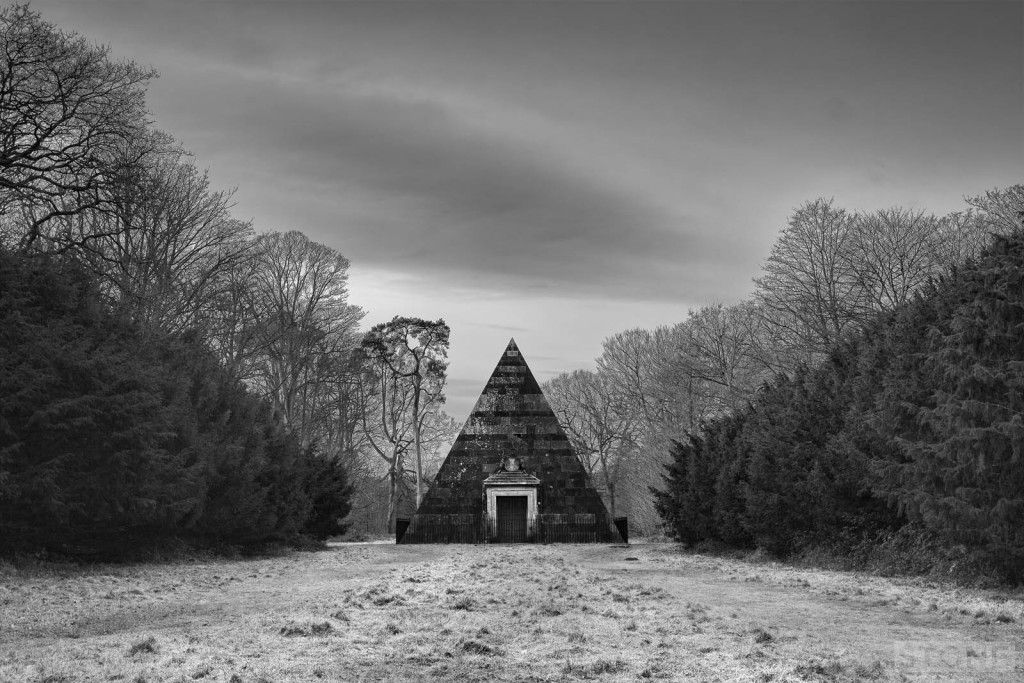Blickling is a rather lovely estate near Aylsham, open to the public, with a few good trackways and walks across it to amble along. It also contains a couple of interesting buildings aside from the more obvious hall itself and the large Carp filled lake, so it’s easy to not get the full benefit of wandering around the fringes. For me the most interesting bit is the Mausoleum, just because you don’t generally get Romanesque pyramids popping up in the landscape, but there is one here.

It sits in to the North East of the sprawling Jacobean House at the end of a drive through mixed deciduous trees and conifers in the Great Wood. It was built in 1793 to a design by architect Joseph Bonomi and is apparently modeled on the tomb of Caius Cestius in Rome. It was commissioned in memory of John Hobart; the Earl of Buckingham by his daughter Lady Caroline of Suffield and her husband William Ashton Harbord The second Baron of Suffield who lived at Gunton Park. The Hobarts as a clan were responsible for pulling down the original Medieval moated manor house and putting the current rather precious but beautiful hall on the site. One of a group of people who controlled British life at the time with proteges such as the Walpole family who in their time spawned the Prime Minister buylevitra.net Robert Walpole who himself commissioned the Palladian splendour of Houghton Hall and whose family also owned another tract of Norfolk at Wolterton and Mannington.
It contains the remains of John Hobart and his two wives, all others were consigned to St Andrew’s church crypt. It is a curious thing, strangely out of sync with the landscape, the limestone placed so carefully in the clouds of grief of Lady Caroline in a way that befits the social standing of the ruling class in England at the time, its limestone now stained by the elements buried in the swathe of trees and above the door ‘AVCTOR PRETIOSA FACET’ – ‘The giver makes the gift precious’, which is about right as it’s rather lovely and an unusual treat to look at even now thanks to The National Trust..
The park itself is worth a wander in the low light of winter, the lumps and bumps of centuries lit by the angled sun make for a few treats on the horizon, lodges, The Tower House and dry stream beds cutting through the loam adding a bit of a roll, Neolithic flint finds lead the line of human occupation back to 6,000 years ago. There’s even a dressed Bronze Age barrow in the park, two ring ditches, a possible Roman site, and medieval boundaries and trackways leaving their dry invisible paths across the landscape.







